List of Ongoing and Upcoming IEOs To Watch
Harmony 
Binance will be introducing the Harmony One Coin IEO via its launchpad on May 28. The Harmony team, which is targeting to raise $5 million via an IEO, is building a blockchain scalability solution based on sharding and peer-to-peer networking.
It features high transaction throughput, low-latency and low-fee consensus platform that is designed for decentralized economies of the future -- with a target of hosting 10B people. The project is re-looking at networking, systems, and algorithms with the intention of applying innovations in these areas to achieve this and other goals.
Thanks to a sharding-based consensus protocol and pipelining technology that allows for parallelizing of transaction processing, the network is able to handle connection latency and achieve scaling of throughput as its' size increases.
The team is also developing a kernel that runs the protocol with increased performance, that will allow a broader set of devices to participate in consensus on the decentralized network. Each shard employs the BFT algorithm to reach this consensus within seconds. The platform also employs the QUIC protocol to deliver messages faster when possible and UniKernel to enhance the performance of the operating system on a single node.
This means that Harmony can be used by developers to build decentralized applications and marketplaces that require high throughput and significant decentralization including games, decentralized exchanges, AI data marketplaces and more. The Harmony platform will also eventually be a data sharing platform once zero-knowledge proofs are fully implemented.
The Harmony Testnet is currently live and already allows the sending and receiving of tokens through the platform's wallet. It also boasts staking nodes, a dedicated block explorer, a block benchmark, BLS multi-signatures & a gossiping broadcast, together with secure resharding with the Cuckoo Rule, and peer discovery via libp2p bootnodes & Kademlia routing. The team hopes to release the network's mainnet this year.
One token will act as a payment mechanism for various actions on the network (including transaction fees, gas fees and storage fees), while also allowing developers to create applications that align with the goals and incentives of various stakeholders. This same token will also be utilized as stake for the network's DPoS consensus model and stakers will earn rewards that can also be spent to pay network fees. Finally, the token will also be utilized in the governance of the protocol by giving holders the right to vote on on-chain governance issues.
In order to overcome the reportedly poor user experience with previous "first-come-first-served" fundraising models like traditional ICOs, Binance has introduced a lottery model for the Harmony token. Any user holding at least 50 Binance coins can obtain a lottery. The system will take BNB balances in 8 snapshots at 23:59:59 (UTC) each day and the number of tickets will be based on the average of these 8 snapshot balances. Binance will select 16,666 winning lottery tickets to choose eligible participants.
Tokenmom
The Tokenmom decentralized crypto exchange was created in 2018 and enables the free trading of tokens including ICO tokens, earlier than many other non-DEX exchanges. It therefore shortens the average duration which users have to wait for ERC20 and ERC721 ICO and IEO tokens to go live on exchanges.
Interested users also do not need to sign up to the exchange and no deposit or withdrawal required, and there is no KYC required to start trading. A user can import an existing wallet to the exchange wallet, create a new wallet, or connect their existing wallet using MetaMask.
From there, it is possible to trade any tokens anytime on the exchange, which supports PCs and/or mobile devices. Besides these two factors that that make it different from other exchanges, Tokenmom also allows users to trade all Ethereum-based tokens through their personal wallets regardless of where they are listed on other exchanges.
They are also planning to add a new EOS blockchain Dex and the ability to trade in WBTC(Wrapped Bitcoin) tokens to further cater to those who have decentralization more in mind.
The Tokenmom token, which was launched through an IEO on the Latoken Launchpad in January that will conclude on June 7 will be able to be spent for more than just transaction fees in the future. TM coins received as TX fees can be burned to boost token demand. As an exchange, Tokenmom will offer token listing services and the token will grant holders the right to vote for token listing and suggest new features.
Geco.one
Geco.one is meant to be an investment service where investors will invest their resources with individual or group traders and get returns. The service also supports those who want to truly become crypto traders through features like the support of leverage, shorting and long positions, and futures trading.
For those interested in trading on the platform, keep in mind that said trading will be carried out by experienced traders who will use different market skills and tools. Think Bitmex with all funds delegated to experienced traders who act as portfolio managers for other people.
A willing investor will be able to scroll through a list of traders and accounts and entrust their resources to any one of them and have them trade on their behalf. This selection of traders can be done based on historical data/information regarding successes and failures of a particular crypto trader within a specified period of time and within a given area of interest, including derivatives such as futures. This tool will allow the ranking of traders based on multiple factors like risk management strategies and the history of every transaction. Traders and investors alike will also gain access to knowledge resources in many areas such as crypto-economics and the analysis of trader psychology.
Through the PAMM Portfolio, willing investors will also be able to invest by allocating their money or portfolio across many different accounts in order to diversify their risk and balance their potential return on investment at the same time. Think crypto mutual funds with a different name.
Geco.one will not act or serve as a crypto exchange. Instead, it will act as a sort of intermediary that links traders and investors to multiple crypto exchanges.
On the other hand, traders who open PAMM and run accounts will use the PAMM cryptocurrency system to invite investors and use bespoke tools that are provided to maximize results. At the same time, traders will be able to design their own trading bots and programs to enhance the overall trading experience.
The Ethereum Blockchain-based platform will employ the GEC token, which will be spent as credit in the system to pay for transaction fees, do data integrations, perform leverage trading and other additional functions. It can also be exchanged with other tokens on different exchanges. Whenever a token is utilized on the platform, it will be burned to provide for constant growth in the exchange's value.
The IEO will launch on the Latoken Exchange on July 1 and July 14th.
Auditchain
Auditchain is a decentralized continuous audit and real-time reporting ecosystem for enterprise and token statistics disclosure. On it, every thing is run through a decentralized consensus based audit procedure under the DCARPE Protocol.
With this protocol, enterprises and businesses will be able to provide stakeholders and regulators with audit assurance. The protocol will be enabled through the DCARPE Alliance, which is a group comprising of accounting, audit, legal, financial reporting, investment, technology and academic communities and professionals. The purpose of the alliance is to further engage the regulatory community, including educating members and promoting the adoption of new protocol standards through the Auditchain.
The AUDT platform aims to provide interoperability between public and private blockchains. It will enable the transparency of assurance processes, audit reporting, and investor and stakeholder payments through decentralized automation at a fraction of cost compared to traditional audit and reporting processes.
For instance, it will be possible with network participants to access performance analytics that provide the highest level of transparency to enterprise systems and control statistics related to real-time financial performance. An enterprise will be able to pay minimal fees, down to zero by participating in the ecosystem.
The platform utilizes AUDT tokens to unlock services and make payments on its' network.
The IEO for this ERC20 token will launch on the ExMarkets Launchpad on June 15. According to the team's roadmap, they target the release of the Auditchain TestNet for the second quarter of this year, the mainnet during the first quarter of 2020, and their commercial launch in the second quarter of 2020.
Viaz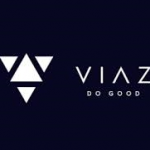
Viaz is a decentralized crypto funding dApp that acts as a conduit between the cryptosphere and fiat currencies by linking lenders and borrowers of fiat and digital currencies.
It will employ smart contracts to facilitate these transactions and enable users to lend funds to others for profit and borrow and transfer crypto anywhere and at any time in a more efficient, cost-effective and secure manner. Viaz-based loans will be fully collateralized and tax-free.
This way, the Viaz network will be able to facilitate all sorts of financial transactions, even among populations without bank accounts.
Viaz is based on Tezos blockchain and will be the first dApp on this ecosystem. The platform will allow for collateral management and guarantee compliance with applicable capital requirements. The team, which is based in the Cayman Islands, already has a working prototype product and are developing mobile applications for the platform. The platform is now in its' beta phase. Any VIAZ tokens bought during their IEO will be locked for 1 year and the team's tokens will be vested for over 2 years.
The IEO will launch on the p2pb2b Launchpad on June 8 and conclude on July 8.
Crypto Market Ads
Crypto Market Ads (CMA) is an Ethereum-based blockchain ecosystem with a decentralized ad marketplace that connects market publishers and advertisers to solve problems related to crypto advertising and marketing.
The team will also create a marketplace that facilitates the selling and buying of other goods and services as well through a p2p network. The latter will also be used alongside interactive tools such as a drag-and-drop marketplace builder and ICO platform on which companies can launch their ICOs and facilitate the participation of other stakeholders in their businesses.
For instance, there have been announcements of the banning of crypto ads by major search engines and social media companies, while publishers and marketing agencies/professionals have also been charging high fees.
Alongside these factors, with the CMA platform, crypto companies are also unable to find reliable influencers and publishers since the market has recorded a lot of scams and fraud. The platform will have publishers and providers who will offer advertising services at the lowest possible prices while advertisers will be able to execute marketing and advertising campaigns in a quick and trustful manner without high budgets and extensive marketing teams.
The CMA platform will feature forum signatures, social channels, website and ICO listings, an email newsletter, marketing services, and blockchain services including the services of trusted advisers. Publishers will be able to buy or sell CMA tokens while advertisers will be able to buy them. The advertisers can then buy ads from the publishers using said tokens.
Publishers benefit from low fees, fast payments and access to targeted crypto market advertisers, while advertisers benefit from accessing ads and marketing services at low budgets, accessing crypto influencers and publishers in one place, and using escrow accounts for greater protection against fraud.
The platform's dedicated token will be the only payment option on the marketplace. It will also provide access to unique services on the platform beyond buying and selling ads.
The project's pre-ICO concluded on Monday, May 20, while the private sale is on until June 4. The IEO will launch on the IDAX Launchpad on June 5 and end on June 6.
Full-scale marketing of the product and live payouts will start in Q3 of this year.
Gath3r
The Gath3r hybrid PoS and PoW blockchain combines merged mining (mining more than one coin) with in-browser mining, to allow for greater energy-saving in cryptocurrency mining, since the network will be decentralized and function in a similar fashion to the Golem Network. It also provides interoperable smart-contracts, masternodes, and web and mobile-based staking.
Users who install the code on their app and website can earn commissions based on their users passively mining cryptocurrency with a portion of their excess GPU and CPU computational power. This will happen when the user visits a website or app and opts-in to participate in the process.
Website owners can also give loyalty coins to the visitors or viewers of their sites who can then store the respective tokens in their web-based staking wallets. They can then automatically stake these coins to earn more on the platform. Web site owners and visitors can also opt to cash out the crypto to local fiat where available although all payments will be made in BTC and the GTH token.
This solution allows for better web monetizatio, and by facilitating the participation of dApps and websites, it will help to decentralize mining, which is currently largely centralized.
The network's use of merged mining creates an additional hashrate for auxiliary chains, also increasing the security of the networks involved. It works by a website owner that hosts the code on their website for free. The crypto(s) can then be mined via browsers (GPUs) or CPUs. This code is already being utilized by over 50,000 websites including some of the biggest ones like Unicef and Piratebay.
Some of the code's use cases include charity/donation websites, content websites and blogs, video and content streaming sites, and mobile applications. Unlike the ads on the current iteration of the internet that are hosted or presented on web pages, this type of ad will act as a non-intrusive addition to ad revenue and if a user chooses, they can even browse ad free. Overall, this may cause a powerful rivalry to surface between Gath3r and Brave(BAT).
Gath3r can also be utilized as a turn-key solution by developers and organizations to avoid investing a lot in technical and capital requirements. They can clone or fork its' chain to develop and deploy their own platforms and expand the technology across new boundaries.
The Gath3r blockchain also implements smart contract interactions between child chains, which allow for the interoperability of blockchains through Gath3r and private masternodes. These masternodes can be launched directly from a GUI and trigger network transactions and tasks based on pre-defined conditions. The blockchain will use GTH tokens that can be staked and earned via these masternodes as well.
The Gath3r IEO will launch on the Coineal Launchpad on May 27 and conclude on May 28 of this year.
Jobchain
Jobchain allows users to find workers or hire them, find work or employment and to pay/earn salary in cryptocurrencies. On it, companies and employers can browse through qualified workers and hire those they like instantly, as well as post their own jobs which these applicants can apply to.
Job applicants can search for posted jobs, post job ads, and get hired and paid in crypto. Job applicants are able to make offers on posted jobs, negotiate payments within the app, set a flexible payment schedule, and stay private by choosing what to share and not share with other platform members. They can also store, download and manage their work experience; and track applications to jobs.
Employers can filter employee/applicant searches based on availability, location, salary and rating. They can also find professionals near them or in area that matches their criteria. The app features a full chat feature with which employers and applicants can use to negotiate the terms of their cooperation. A small fee will be charged to cover maintenance costs of the platform when someone is hired and when someone is requesting to be hired via the platform.
The overarching platform will also feature rewards which eligible customers can earn in the platform's native JOB token based on their rating and amount of coins they hold in the App.
Overall, JOB is used to pay for services and work to be done. The platform's Android and iOS mobile app, which is scheduled for release in Q4 of this year, will feature a cryptocurrency wallet through which users are able to buy, sell, send and store preferred cryptocurrency. Their free-to-use app will also feature an asset management service.
Certified verification nodes will form a network on the web app, which will be used to verify users' backgrounds. The JOB IEO will launch on May 28 of this year via the Probit Exchange Launchpad.
Whether Jobchain will disrupt LinkedIn or any other website with a well-known job board and job search algorithm remains to be seen.
Biido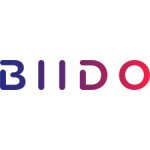
Biido is a fee-free digital asset exchange marketing itself as convenient, having considerable aesthetic value and being easy for beginners in the cryptocurrency industry to pick up.
The trading platform will feature its' own trading bot, technical analytics, and a community strategy, among other features. It will also have BiMi (the Biido Identity Verification System) and BTC (the Biido Trading Community). Users will be able to spend BION functional tokens on activities offered on the Biido.
In addition to facilitating instant transactions, the platform offers more benefits to users who have done more transactions on the platform. The exchange, which will be accessible via iOS and Android mobile apps, will also host an IEO Launchpad to allow for the launching and quick listing of projects on the exchange.
The platform token , BION, is based on the Ethereum blockchain and will be spent to unlock premium features such as portfolio analytics and Arbit tools. The token will act as a reward and incentive token in areas like the Biido growth engine and the copy trade feature. It will also serve to grant rights to users to vote for their favorite coins. Holders can access full platform services at discounted prices.
The Indonesia-based team will launch its' IEO on the Probit Launchpad starting on May 27 and ending on May 28 of this year.
Global Property Register
The Global Property Register combines blockchain and AI to act as a global real estate register in both developed and developing countries. The platform will implement proof of ownership for real estate property, reconnect users to real estate and financial markets, and empower property owners and developers to make smarter decisions through AI based features.
The registration of property on the blockchain via the XRX -Title feature will provide for permanent records that are hard to alter. The platform will also include analytical solutions and tools to empower people in decision making.
Users will be able to search for property globally to buy and to manage it through dedicated dashboards. There also will be a social network called XRX-Socio to help educate users about real estate matters.
The platform will remove barriers such as high costs that affect participation in real estate markets by lower income individuals. The global property exchange, XRX-Sale will act as an international digital real estate marketplace where people can trade real estate property freely.
Through the proof of property to real estate owners, the platform will also help to eliminate real estate property fraud around the world, especially in developing countries. All services will be accessible via a mobile app from where users can manage their assets, transactions and records.
The IEO will launch on the Exmarkets Launchpad in 3 days, i.e., on May 26 and end this December.
xCrypt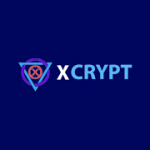
xCrypt is a fee-free crypto exchange for STO and ERC721 tokens (hybrid exchange), that allows users to delegate trading to experienced traders.
Users and traders will be able to interact directly on the platform and it will also feature custom-built bot trading and an airdrop ranking system. The ecosystem will even have its' own debit card through which cryptocurrency will be able to be pent by users worldwide through partner ATMs. These debit cards will also function traditionally with fiat currencies.
xCrypt will utilize the XCT token as its' platform token. The number of members who purchase the tokens will be split into multiple tiers depending on the amount they buy.
Their social trading platform is currently being tested and will be released in Q2 of this year while debit card integration will be done in Q3 and the STO marketplace, in Q4.
The pre-ICO for this project ended last week to pave way for the IEO that launches May 24 on the IDAX, Bitforex, and Coineal Launchpads.
Crypton
The Crypton team is creating a crypto exchange that focuses on low fees and real-time support to users as well as a simple and clear UI/UX experience. It will also feature simple and clear deposit/withdrawal/exchanges of crypto for fiat money. Deposits will be free as will be the Crypton debit card.
Besides, the exchange may pay some of the fees for the large customers (market makers) using pending orders. This low fees solution is typically used to attract new exchanges to the market. With regards to trading, the platform will support a throughput of 100,000 transactions per second, which will depend on the effective cooperation between the technical and trading departments. This TPS rate hopefully allows for better scaling.
The CRTX token will be the platform's token to provide access to platform services and to pay for transaction fees. 20% of each fee will be sent to the token growth fund and over the following month, the funds in question will be spent to buy more CRTX tokens from the market to be burned. The aim in doing so is to raise demand for the token. The rest of the amount received as fees will be utilized for platform operations and the scaling of business processes.
The project's IEO pre-sale will start on May 30 and end on June 30, while the IEO is to run from Aug 1-Sep 15.
Tremiss
Tremiss is based on a blockchain known as Tremiss that can scale to achieve a huge throughput and transaction speed, while utilizing new protocols and algorithms as well as new principles. This blockchain allows for the issuing of smart contracts, the creation of decentralized applications, making calculations of enormous complexity, and the storing of information under the same standard and within the same platform.
Since it does not store transaction history, it thus protects the history of all on-chain digital asset transactions. Overall, the platform is comprised of a global payment system that utilizes smart contracts, supports the storage of a large amount of data and works with decentralized applications.
The Xtre protocol is responsible for multi-threading and the communication with nodes while NodeTr, the wallet, the miner, and the network's computing unit do the preliminary network calculations. The token will be mineable by CPUa and will grant holders the right to vote.
The project's pre-sale ended on April 25 while its' IEO is on-going on the Livecoin exchnage and will be held until May 29.
Chromapolis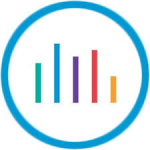
Chromapolis is a platform that will host dApps whose data will be stored in a regional database in an attempt to solve existing dApp platform issues such as high fees, an overall poor user and developer experience, and a relative lack of security. ChromaWay, the company behind this blockchain platform, is currently working with public and private sector stakeholders in order to build applications on this platform, mainly around the areas of real estate and finance.
For instance, they have collaborated with Sofitto to develop a proposal for a Swedish e-currency, which is currently being evaluated by the Swedish central bank, Riksbanken. This proposal describes an open payments ecosystem built around ChromaWay's Postchain and Sofitto's groundbreaking blockchain hardware.
Another project they are working on is the Universal Identity Hub (UIH), a project for the United Nations Women Blockchain Live Test and Simulation, which is being done in collaboration with Abt Associates and Cadasta Foundation. In general, this project aims to connect women and families in dangerous and fragile contexts.
There is also the Green Assets Wallet which aims to equip green investors with technology to better deliver on the goals of the Paris Climate Agreement. ChromaWay will build a platform for validating green investment claims and reporting on the impacts of green projects.
PostChain, the world's first consortium database, is a consortium of databases that offers highly resilient distributed database management with distributed control. It combines the immutable consensus of a blockchain and the ACID properties of a database management system. Overall, it will allow for the sharing of information between companies and/or individuals in a secure and transparent way.
The IEO will launch on May 28 on the KuCoin IEO platform.
Slothee
VID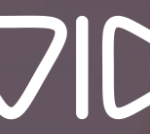
Bitzon
Coti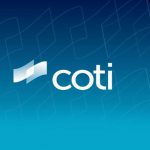
Comprehensive Decentralized Payment Solution, or COTI, is a consumer payment use case for the blockchain, which aims to solve some of the problems with current payment concerns among consumers and merchants, while serving other functions such as the trading of crypto and goods and services as well as hedging. It has a native wallet and exchange as well as unique features related to security, low fees, decentralization and scalability.
For instance, the team intends to have the platform helping to lower payment fees given that it is expensive to pay for goods and services through legacy online merchant payment platforms like PayPal, and AliPay. The platform will implement instant p2p payments and remittances between users, groups and organizations.
Hosted on the platform is Trustchain, which is a proprietary consensus algorithm based on machine learning and a multi-DAG (directed acyclic graph) data structure that helps it to better achieve scalability. DAG, according to their website, is the most suitable infrastructure for payments due to its' scalability and low transaction costs. Those familiar with the IOTA network will have heard this before.
Regarding scaling, COTI can scale to process over 100,000 transactions per second, compared to traditional payment systems that can usually process around 25,000 transactions per second and common blockchain protocols that can process around up to around 20 TPS. Furthermore, the platform will provide safeguards to users against errors, fraud and counter party abuse. It will also eliminate intermediaries, the need for costly mining, and reduce costs and general energy consumption in crypto mining, while employing a price stability technology that has the goal of helping the industry draw closer to the widespread adoption of cryptocurrencies.
The team intends to launch the alpha test phase of the platform after the token sale, while the mainnet will be launched during Q2 this year. The IEO for the COTI token will launch on June 4.
EvenToken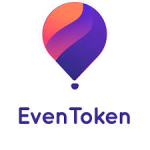
EvenToken is a decentralized sponsorship platform for event planners to tokenize event tickets, and this, among other things, will hopefully help to empower global participation in the crypto space, combat ticketing fraud, and facilitate efficient secondary ticket markets, as well as solve other challenges related to event planning such as localization and ticket scalping. In addition, event planners will get a portion of the profits generated from the secondary ticket markets.
Ticket scalping will be solved through an arbitrage opportunity that will also benefit secondary ticket market operators.
A user (only corporate and verified) launches a sponsorship campaign on the platform while backers, on the other hand, who can register to be recognized backers, can buy tickets and have the right to redeem said tickets on the platform. Backers can also deposit cryptocurrency on the platform but will first need to pass KYC/AML procedures with all local regulations.
The IEO started yesterday on the IDAX Launchpad and will conclude today, May 23.
Gexan
Gexan is a blockchain lottery platform that uses a hybrid of PoW and PoS algorithms to allow for the mining of Gex lottery tickets on GPUs or the staking of the tokens on the platform to earn more rewards. Users can install masternodes, through which they can win tickets on a daily basis. To generate the lottery tickets, users will choose a set of numbers and then wait for the draw. For pool-based ticket draws, users will get a ticket and send it to a pool. Chances of winning can be increased by sending more tickets. Once the draw is done, the amount won is credited to the user's account.
The platform will utilize smart contracts to facilitate the trading of tokens when they are listed on applicable exchanges. It also intends to solve the many problems currently existing in the lottery business including the lack of transparency, the fact that just a small amount of revenue is allocated to prize funds, and the high operating expenses experienced in the industry such as distribution, offices, shipping, retail fees, and complicated prize cash-out.
To do this, the platform utilizes smart contracts to validate drawings fairness, while allocating 85% of ticket sales revenue to its' jackpot and acting as a distributed system for awards and tickets to achieve an almost negligible SG&A cost, and facilitate instant winning payments without the participation of third parties.
The IEO started on May 17 on the p2pb2b Launchpad and will conclude on May 24.
Contentos (ICO)
Contentos is a decentralized content platform invested in by Binance Labs, on which assets can be freely produced, authenticated and distributed. It will have real-time user feedback and it is trying to address problems related to content creation and content platforms such as the unequal distribution of revenue on publisher networks, the opaque control of traffic with real user needs being actually not communicated or fulfilled, the lack of copyright protection where ownership can't be verified, and risky credit systems and malicious acts by publishers and content platforms.
Contentos, whose ICO kicks off on Saturday, May 25 and ends on June 10, will have a p2p revenue distribution based on open, transparent and direct rewards to users, decentralized traffic distribution where users can share and promote content to the people they want, and trackable copyright authentications and transactions as well as an immutable credit system where users are responsible for their credit scores.
Binance, IDG Capital, NEO, DigiFinex, Matrix Partners, YeeCall, Loopring, Blockshine, UniValues Associates, Node Capital and Fulcrum, are some of the companies investing in Contentos.
VenusEnergy
Estonia-based VenusEnergy promotes the use of renewable energy in cryptocurrency mining in order to save the massive energy that is typically consumed during mining. The platform will basically encourage the sharing of mining power with VenusEnergy token holders. Users will be able to mine 24 different cryptocurrencies based on the SHA256, Ethash and Equihash algorithms. They can also halt mining at any time and receive a lumpsum for their electricity usage.
With the token, holders will get 20% cheaper energy than the cheapest energy sold in the EU.
The Ethereum-based platform launched its IEO on April 4 on the Exmarkets Launchpad, which will conclude on May 31.
Rapidz
RapidzPay is a decentralized, renewable energy tokenization and energy trading platform that hopes to make payments for energy simple, fast and hassle-free while reducing GHG emissions and mitigating against waste pollution. Once it has been tokenized on the platform, the energy can be paid for by consumers in fiat or in cryptocurrencies.
The IEO started on the Latoken Exchange Launchpad on May 14 and will continue June 13.
TerraGreen
TerraGreen is a renewable energy tokenization and trading platform that aims to use the blockchain, cryptocurrency, IoT, big data, and adaptive intelligence to help reduce GHG emissions and mitigate against waste and pollution issues in relation to crypto mining. When tokenized on the platform, renewable energy can then be traded for fiat or cryptocurrencies.
TerraGreen Coin is thus backed by electrical energy and based on the DeKo thesis, which suggests that it could be more stable than a stablecoin that is backed by gold or debt. Producers of renewable energy on the platform can trade renewable in tokens and consumers can pay their bills right from their wallets. The platform will also allow for payments in other tokens such as BTC, LTC, XRP, BCH and TGN and others to be added later.
The platform tracks how much energy is produced and consumed and what it is consumed for. It's based on the SHA-384 algorithm and its' own blockchain, which will be connected to all transactions made by participants.
The IEO lauched in January on the Exmarkets Launchpad and will conclude on May 30.
Plannerscape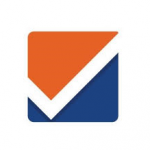
PlannerScape is a decentralized workplace that utilizes blockchain, AI, and cloud computing to reward users who are living a more balanced lifestyle. Users or planers can utilize the platform to plot the most effective way to work and live personal lives, optimize their time using platform tools, and earn rewards for doing all that while earning a greater peace of mind and maximizing the benefits of a sharing economy.
For instance, machine learning will help them know what tasks they should prioritize and why, and gamify daily work which triggers intrinsic motivators when a user finishes certain tasks. It may also lower costs for remote workers because outsourced work on the platform is no longer charged a 30% fee.
The platform employs the PLAN Token for the exchange of value between users. The token represents time or work done, and this allows people to work and earn remotely. Users will be able to post professional profiles that employers can check and apply for work with.
The project has now finalized its' custom chain for reputation profiles and machine learning models for the AI system and the UI, as well as an MVP for commercial products. Its' AI demo is now available for trial by anyone. Its' first commercial product is expected to be ready in Q2 of 2019.
The IEO for this project started on the Latoken Exchange on March 15 and will conclude on June 12.
MECA Coin
MECA Coin is targeted to casino games that are compatible with Oculus mobile VR and based on HTML5 to support multiple devices. Therefore, the platform will host high quality 3D online games developed by high quality 3D gaming experts and players will be able to explore its' virtual Casino City for free and communicate with other players or play together with them.
The MECA IEO launched on the Latoken Launchpad on April 15 and will conclude on May 31.
Tron Game Global
Tron Game Global is a blockchain-based decentralized global payment and transaction solution especially for online gaming applications.
The Tron Game Global protocol uses AI and the blockchain to create a multichannel social network that integrates directly with other technologies to allow exchanging of resources such as money, loans, and encrypted assets in just a few clicks. It will facilitate transactions across different blockchains and be accessible on both Android and iOS apps.
Among the may features on Tron Game Global are the Game Global Exchange, Game Global Bot, Game Global Invest, Game Global Pay, Game Global Card, Game Global Play, and a dedicated wallet.
The GTP token will be used to fuel the platform's economy.
The IEO launched on the Latoken Launchpad on April 16 and will conclude on May 16.
meVu
meVu is a peer-to-peer game betting application that utilizes Ethereum smart contracts in order to allow for live betting on games, with reduced betting fees compared to any traditional or eSport betting platform. Through an API, users can spend MVU or ETH on any website in order to bet. Not only can users bet on games; it is also possible to turn any event or situation into a social bet such as group golfing games and other social activities that are special for small groups of users.
Users will also be able to form new friendships and find and create sports on the global MEVU network.
The IEO will start on June 11 and end on July 16.
Cryptobuyer
Cryptobuyer, which started in 2015, is a platform for trading cryptocurrencies that acts as a link between cryptocurrencies and fiat currencies. It has been serving clients in countries such as Venezuela and Argentina where there is high level of hyperinflation and devaluation of the local currencies. So far, it has more than 50,000 registered users. The team is planning on having crypto ATMs (all their ATMs are currently installed in Mexico and Argentina), and has already developed point-of-sale solutions that are being used at different stores to allow merchants to easily accept cryptocurrencies as a form of payment without worrying about understanding the technology in question.
They will be extending their services to more countries in North, South and Central America in the next five years, by installing an extensive network of ATMs and point of sale solutions and expanding their client base so that people in these regions are able to buy, sell and spend cryptocurrencies freely and with ease. They are also planning to expand services through BTM franchises using the latest BTM technology, know-how, supply services and customer service. In the future, Cryptobuyer plans on launching an iOS app and a general mobile app to increase the mass adoption of their services and crypto in general.
Based out of Panama, the team held its' pre-sale from May 2-May 31, while their IEO launched on Coineal Launchpad on May 1 and will conclude on May 31.
Guider
Guider is a traveler platform that aims to help travelers to search for a suitable guide so they can reach their true traveling potential. The platform will have reviews, ratings, and personalized recommendations through neural analysis of accumulated and external Big Data.
The system will host a list of big data partners who have relevant information that can be provided to tourists. Tourists can then use booking forms and smart contracts to book for services and pay by fiat or Guider tokens. The smart contract finishes and writes to the guide's history once the excursion is completed. The use of neural networks and machine learning helps to save travelers time searching guides and reading reviews, while providing new marketing opportunities
The token will primarily be used to buy project services, which are denominated in two fiat currencies, while the GDR tokens are denominated in ETH and have their own exchange rate. A user will therefore need to first buy these tokens in order to buy services on the platform. The usage of platform tokens will progressively reduce the commissions involved with the transfers of currencies of different countries.
The number of tokens in circulation will keep reducing whenever tokens are used to buy services through smart contracts. This in turn leads to a higher demand and price of the token.
The project's IEO started on the Probit Launchpad on May 10 and will conclude on June 11.
The Facite Foundation
The Facite Foundation builds and operates a mining center in Kazakhstan under a 49-year lease contract which accommodates up to 2 million mining machines that are currently available. Since there is 180 hectares of space; it is expected that the center will produce stable and consistent revenue while utilizing cheap electricity. Some of the profits will be shared with the token holders or used in the Facite Foundation's community project.
The plant uses solar power and is located very close to a power substation, from which the city of Pavlodar was expected to start providing electricity to the mining site this year. With active support from the local government, it is expected that the electricity tax will be able to be reduced by about 25% , meaning the site can become more competitive and profitable for mining. Using renewable energy means the project will be promoting the renewable energy agenda as per the wishes of the Kazakh government.
Alongside the utilization of solar power, the project will also offer a bus card that will allow the usage of crypto on supported public transport systems. Dividends will be paid out to those producing solar power on transport cards as well as those mining the crypto.
The IEO launched on May 27 and will conclude on May 29.
Jungle Token
The Jungle Token ecosystem will provide help, support and donations from contributors for the purposes of developing/promoting nature and forests including allowing users to contribute to growth of forests by identifying a specific number of new trees they want to have planted through donations to the platform. The platform is based on the Ethereum blockchain and makes use of the Jungle Token for all of its' services.
The team is a group of volunteers who are nature lovers. The platform will allow members to create personal certificates and even print certificates as gifts for other people.
The Jungle Token will also be able to be spent by holders to own, buy, and sell stock on supported markets. Those donating will benefit from a 50% discount on a hobby garden to be developed by the team in the first quarter of 2020.
The project's IEO started on May 29 and will conclude on July 24.
CAPZ Rewards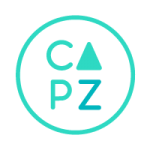
CAPZ is a transactional platform being develop on the blockchain to enable users to earn and accumulate CAPZ Rewards as loyalty or reward points by doing transactions on the platform, and these rewards or points will be able to be exchanged across CAPZ's network of partners for products and services, which makes it an easy way to make money. The CAPZ Rewards loyalty points also do not expire.
Customers will have a digital account and the funds contributed via the CAPZ ICO accounts will be invested in Brazilian government bonds, offering 100% CDI returns or 6.5% per year. Once a customer opens their digital account, they can gain access to their digital credit card with a credit limit corresponding to the amount they invest. The funds will then continue to yield even if the customer uses a digital credit card. The transactions themselves are fee-free and still earn customers points.
When customers perform transactions on the platform, or refer friends to the platform, they also get more cash back in the form of tokens. This cashback will be around 20% of what they have invested or spent over the year on the system. Friends can earn rewards through referrals using their digital or physical credit card or QR code, and can even split bills with their friends using the app. Using a digital credit card will also generate 0.99% cashback for every transaction and a piece of the cashback generated by the referred friend.
The IEO started on May 14 and will conclude on August 14.
Dapp.com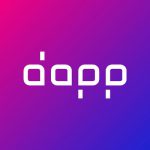
Dapp.com is a playstore for blockhain dApps, currently enjoying 150,000+ monthly unique visits from all over the world as well as over 100,000 registered users.
It features, among other things, a built-in wallet solution that provides a seamless experience for everyone using Dapps from all different blockchains (a Dapp Store Wallet), a marketing tool for Venture Capitalists, developers, and researchers to gain a deep understanding of the Dapp market landscape including growth tendency, usage and engagement metrics. The platform also offers what are called "Dapp Analytics" to aid in the evaluating of performance of a dAPP by developers and a Multi-blockchain identity Network (MIN), which is a decentralized tool built to create easy access to all Dapps.
This MIN helps to get rid of the complexity of creating and managing multiple accounts from different blockchains since users only need to manage just one Mnemonic phrase that connects all of their wallet addresses/accounts. It also facilitates the usage of a Cross-Chain Dapp SDK that allows developers to develop cross-chain apps connecting to multiple blockchains.
The team has already received more than $1M in angel investments and completed and launched version 2.0 of their platform with an algorithm for Dapp.com rankings. They have also completed the development of a fully functional mobile dapp wallet for the Ethereum blockchain and launched 7 mainstream blockchain Dapps.
Their IEO will start on Monday, May 27.


